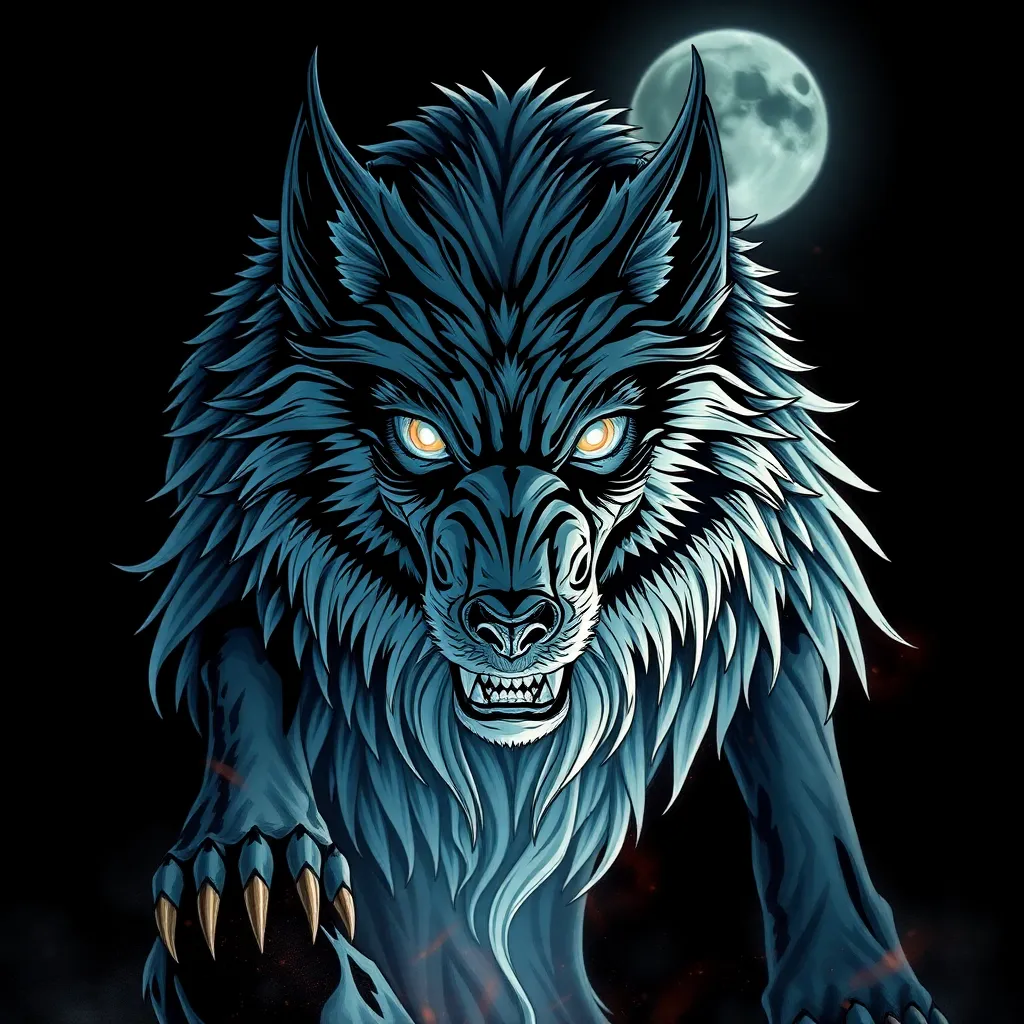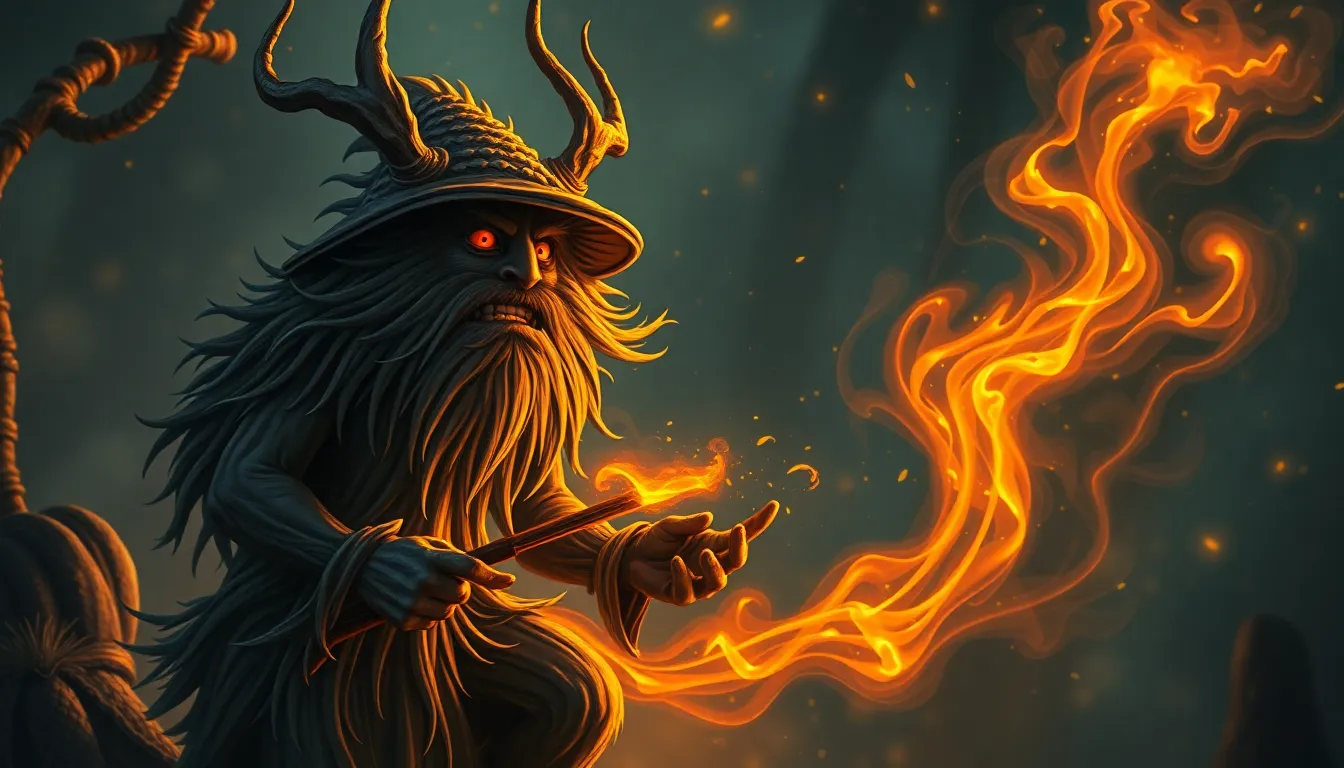Fenrir: The Wolf of Ragnarok in Norse Mythology
I. Introduction
Norse mythology is a rich tapestry of stories, gods, and creatures that have fascinated people for centuries. It encompasses a wide range of themes, including creation, destruction, fate, and the eternal struggle between order and chaos. Among the pantheon of Norse deities, one figure stands out as a symbol of impending doom: Fenrir, the monstrous wolf. Fenrir’s story is deeply intertwined with the apocalyptic event known as Ragnarok, where he plays a pivotal role in the downfall of the gods. This article will explore Fenrir’s origins, his transformation, and his ultimate significance in the context of Ragnarok.
II. Origins of Fenrir
A. Birth and parentage of Fenrir
Fenrir is the offspring of the trickster god Loki and the giantess Angerboda. His parentage is significant, as Loki is often associated with chaos and deceit, while Angerboda represents the primordial forces of nature. Together, they produced three notable figures: Fenrir, the serpent Jormungandr, and Hel, the goddess of the underworld.
B. The prophecy surrounding Fenrir and his siblings
The birth of Fenrir was foretold in ancient prophecies, which predicted that he and his siblings would bring about great misfortune for the gods. This prophecy instilled fear in the hearts of the Aesir, the principal gods of Norse mythology, who recognized the potential threat posed by these offspring of Loki.
C. Significance of Fenrir in the context of Norse creation myths
Fenrir’s existence is crucial in understanding the duality of creation and destruction in Norse mythology. He embodies the uncontrollable forces of nature, which, while essential for life, can also lead to devastation. His role as a harbinger of the end times reflects the belief that chaos is an inherent part of the cosmos.
III. Fenrir’s Growth and Imprisonment
A. The rapid growth of Fenrir
As Fenrir grew, he quickly became a formidable creature, larger and more powerful than any wolf known to the gods. His rapid maturation alarmed the Aesir, who saw him as a threat to their supremacy.
B. The gods’ fear and efforts to contain him
- The binding with the first chains: In their fear, the gods attempted to bind Fenrir with chains crafted from various materials. However, he easily broke free, showcasing his immense strength.
- The creation of Gleipnir: Eventually, the gods sought the help of the dwarves, who forged a magical binding known as Gleipnir. Made from six impossible ingredients, this chain was deceptively light yet unbreakable.
C. The symbolism of Fenrir’s imprisonment
Fenrir’s imprisonment symbolizes the struggle between order and chaos. The Aesir’s attempts to contain him reflect their desire to maintain control over the forces of nature, but Fenrir’s eventual release during Ragnarok illustrates the inevitability of chaos and the cyclical nature of existence.
IV. The Role of Fenrir in Ragnarok
A. The prophecy of Ragnarok and Fenrir’s involvement
Ragnarok, the end of the world in Norse mythology, is marked by a series of cataclysmic events, including battles, natural disasters, and the death of many gods. Fenrir’s role in this prophecy is significant, as he is foretold to break free from his chains and wreak havoc upon the gods.
B. Fenrir’s release during the cataclysmic events
During the tumult of Ragnarok, Fenrir breaks free from Gleipnir, signaling the start of the final battle. His emergence from captivity is a powerful metaphor for the unleashing of chaos and the collapse of order.
C. The confrontation with Odin
In a monumental confrontation, Fenrir faces Odin, the chief of the gods. This battle culminates in Odin’s death, as Fenrir devours him. This event signifies the ultimate triumph of chaos over order and the fulfillment of the ancient prophecy.
V. Symbolism and Interpretations of Fenrir
A. Fenrir as a representation of chaos and destruction
Fenrir embodies chaos and destruction, serving as a reminder of the fragility of order in the universe. His character illustrates the belief that chaos must be acknowledged and respected, as it is an integral part of existence.
B. The wolf as a symbol in various cultures
The wolf is a powerful symbol across many cultures, often representing strength, loyalty, and ferocity. In contrast, Fenrir’s portrayal as a monstrous wolf highlights the darker aspects of this symbolism—fear, destruction, and the uncontrollable forces of nature.
C. The duality of Fenrir as both a monster and a tragic figure
While Fenrir is often viewed as a monstrous creature, he also embodies the tragic elements of fate. His imprisonment and the circumstances surrounding his existence evoke sympathy, as he is a product of prophecy and fear, destined to fulfill a role that leads to his own destruction.
VI. Fenrir in Modern Culture
A. Depictions of Fenrir in literature and media
- Influence on contemporary fantasy: Fenrir’s character has inspired numerous works in fantasy literature, where he often appears as a symbol of chaos and a formidable opponent to heroes.
- Representation in films and video games: Fenrir has been depicted in various films and video games, most notably in adaptations of Norse mythology, where he is portrayed as a powerful and fearsome wolf.
B. Fenrir’s significance in popular culture and fandoms
In modern culture, Fenrir has become a popular figure in various fandoms, representing themes of rebellion against authority and the struggle against one’s fate. His story resonates with audiences, reflecting contemporary concerns about chaos and control.
VII. Comparisons with Other Mythological Wolves
A. Examination of wolves in different mythologies
Wolves are prevalent in many mythologies worldwide, often symbolizing various aspects of human nature and the natural world. Comparisons can be drawn between Fenrir and other notable wolves in mythology.
B. Comparison with Romulus and Remus in Roman mythology
In Roman mythology, the she-wolf that nurtured Romulus and Remus symbolizes protection and the founding of a city. Unlike Fenrir, who represents chaos and destruction, the she-wolf embodies nurturing and civilization.
C. Analysis of wolves in Native American folklore
In Native American cultures, wolves often represent loyalty, family, and the balance of nature. These contrasting interpretations highlight the diverse roles that wolves play in mythology and how they reflect different cultural values.
VIII. Conclusion
Fenrir’s significance in Norse mythology extends far beyond his role as a harbinger of doom in Ragnarok. He embodies the complexities of chaos, destruction, and fate, serving as a reminder of the delicate balance between order and chaos in the universe. As we reflect on Fenrir’s enduring legacy, we see how mythological figures like him help us understand our own fears and the inherent chaos of existence. Fenrir, the wolf of Ragnarok, remains a powerful symbol, reminding us of the eternal struggle between creation and destruction that defines the human experience.




